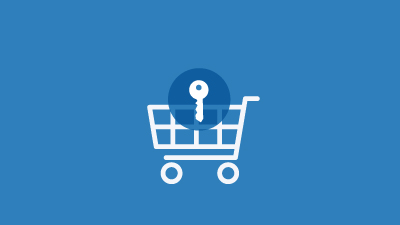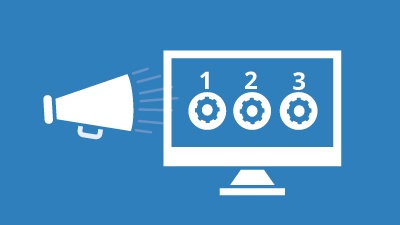Three Areas Where Ecommerce Integration Drives Business Forward

When you entered the ecommerce world, it’s likely you had relatively straightforward expectations of what would happen. You’d launch a site, list your products, and start selling.
It sounds simple enough—people love buying online. It’s easy for the customer, lucrative for you, and feels like a logical step to make money. Whether you expanded from bricks and mortar to bricks and clicks, launched a drop ship site, decided to open a new channel as a distributor or OEM, or something similar, it’s highly unlikely your path to this day has gone exactly as planned.
Maybe the customers haven’t come to your site in droves as initially expected. Maybe they have and it’s put a strain on your distribution channels. Maybe you’re somewhere in between and are woefully unprepared for the tax implications under the Wayfair decision.
In order to move forward, your ecommerce business needs everything pushing it in the same direction. Front and back office tasks need to intertwine, your site and your facilities need to align, and your data needs to flow. Simply put, everything about your ecommerce business needs to integrate.
A 360-Degree View of Your Customer
A lot goes into the concept of marketing your ecommerce site. From the content on your site to the product descriptions to the social media to the advertising initiatives, getting someone from visitor to cart is rarely an easy task—and all of this takes place before the order is completed.
Knowing this, one of the most necessary integrations that exists in ecommerce is the premise of customer relationship management. How do you know what your most profitable items are? What content drives sales and how does a user flow through your site? Where are the most common places you lose customers and what are the reasons they bounce?
Three Reasons ERP, CRM, and Ecommerce Need to Work Together
A well-integrated platform that aligns ecommerce, ERP, and CRM can answer all of this and more. When you can integrate these three components together, you can consolidate your customer data with your financials, your financials with your content, and your content with your customers, achieving the following:
- Informed Customers: True integration of your ecommerce operations can allow your customers better access to products, creating a streamlined user flow and a well-informed customer who will be more willing and able to complete a purchase.
- Increased Productivity: Learning more about what works and what doesn’t gives you the information you need to improve. Pairing your ERP and CRM can give you the power to focus your efforts on the right products and customers, rather than a shotgun approach to ecommerce sales.
- Improved Service: After the sale, you need to continually work to make sure the right product ends up in the customer’s hands and that any complaints or concerns are routed to the right people. Order status from ERP should be available to customers during the life of the transaction and beyond, and customer information should be kept up to date.
Your eCommerce platform (website and shopping cart functionality) should be integrated with your ERP and internal functions as much as possible—with minimal duplication. A well-connected system can provide the aforementioned benefits and more. Learn more in our blog: Giving Yourself the Gift of Smarter Commerce ERP.
Managing the Distribution Process
While keeping up to date with customer information is one thing, the process of tracking and shipping a product is another. Your goal is to move products from your distributors to your warehouse to your customers. Too much inventory adds costs, too little derails your customers’ trust.
Inbound Inventory: Ordering Needs
Getting the inventory to your facilities is the key to providing customers with the items they need. This creates the need for automated ordering and ease of access for your team. It also requires an accurate count of the products you do have. By improving the efficiency with which you count inventory, you can always have a clear picture of what you have, what you need, and how to get it.
By taking it further and integrating inventory and ordering with accounts payable, you can in turn work to improve supplier relationships and avoid stock outs.
Outbound Inventory: Satisfying Customers with Rapid Service
Fast shipping was once a pipedream. Now it’s an expectation. With customer demands higher than ever, integration between ERP and ecommerce can ensure the right product is sent at the right time to the right person. Integrating order management with ERP and inventory can keep the products flowing and provide you peace of mind.
Tax and Compliance Challenges
The Supreme Court’s Wayfair ruling has impacted global e-commerce, especially in how online sellers will handle the growing use and sales tax requirements.
Tax automation, combined with a comprehensive cloud ERP system, plays a significant role in how SMBs and the Modern CFO handle the new sales and use tax requirements. Together, they make managing your financial management needs easier, especially in comparison to utilizing unintegrated legacy systems. And the best time to implement them is at the same time.
Infographic: Integrating Your Front and Back Office
Making changes to the way you do business—even though they’ll benefit you—can be stressful. This includes moving your business online. This infographic from Acumatica explores the processes to launch and the best practices to integrate.
Click the image below to enlarge.
Capitalize on Integration: Ecommerce ERP from Cloud 9 ERP Solutions
When considering eCommerce as the “welcome mat” for your business, remember that customers will buy from your company the first time based on promises, offers, and functionality (ease of use and features), but will only buy the second time if those promises are kept.
In other words, customer satisfaction relies on efficient and effective completion of the sales – pick/pack/ship timeliness and accuracy, seamless financial completion (billing/charge, collection, accounting), and follow-through (return processing and credit, response to inquiries) as well as the ease of the online ordering process. Most of those tasks are accomplished in conjunction with the company’s ERP and internal processes. R
At Cloud 9 ERP Solutions, we specialize in delivering Acumatica for our ecommerce clients and would love to help you. As a Gold Certified Acumatica Partner, we are among the best and brightest of these partners, as proven by our dedication to service and sales. As you begin planning for this year’s busy season, now is the right time to look at your next steps. We invite you to learn more about our customers by reading case studies and testimonials, and contact us for more information.
Additional Ecommerce Resources
The 3 I's of Smarter Ecommerce
The Slow Season: How Ecommerce Brands Can Prepare for the Year Ahead



